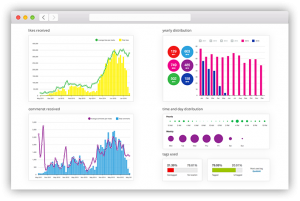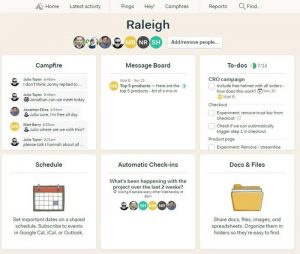Before I hired my first employee, I was somewhat in the dark about payroll. Sure, I knew that payroll equaled paychecks. However, I wasn’t aware of all the challenges and rules that come with running payroll for employees. But as they say, you live and you learn … and I sure as heck learned a lot.
Of course, there are things I wish I learned sooner rather than later. So, I’m here to share with you everything I wish I knew sooner about payroll so you can avoid making the same mistakes I’ve seen and made.
1. Payroll taxes include more than you think
Ever notice those taxes on your pay stub? Ya know, the ones deducted from your pay that say things like federal income tax, Social Security tax, and Medicare tax. Yeah, those are good ole payroll taxes.
When you become an employer, you become the one who’s responsible for deducting, contributing, and remitting certain payroll taxes to government agencies. And on the employer-side, these payroll taxes include much more than you think.
Some taxes are employer-only while others are employee-only. And, some taxes may be for both the employer and employee. Here are payroll taxes you must know about when running payroll:
- Federal income tax (FIT): Employee
- State income tax (SIT): Employee
- Local income tax: Employee and possibly employer
- FICA tax (Social Security and Medicare): Employee and employer
- Federal unemployment tax (FUTA tax): Employer
- State unemployment tax (SUTA tax): Employer and sometimes employee
- State-specific taxes: Employee, employer, or both
Know the above taxes like the back of your hand, and brush up on payroll tax rules. That way, you can properly collect and remit each type of tax and answer any questions your employees may have about what’s on their pay stub.
2. Worker misclassification can cost you
Another type of classification you need to know inside and out is employee vs. independent contractor.
You must withhold payroll taxes from employee wages. But with independent contractors, you do not have to withhold any taxes. Instead, they are responsible for paying their own taxes and benefits. And, the Fair Labor Standards Act (FLSA) only covers eligible employees, not contractors.
Misclassifying your workers could cause a bucketload of tax problems and penalties. Not to mention, a bunch of unnecessary issues for your worker.
Currently, to help correctly classify workers, the FLSA provides a number of factors to keep in mind:
- If the work done is an integral part of your business
- If the worker’s managerial skills affect their opportunity for profit and loss
- The worker’s investments in the business’s facilities and equipment
- If the work performed requires special skills and initiative
- The permanency of the work
- The nature and degree of control you have over the worker
The Internal Revenue Service (IRS) also provides guidelines to help you figure out if your worker is an employee or independent contractor. These factors vary based on the level of control the worker has and how much independence they have with a project or job. The IRS breaks down the degree of control and level of independence into three categories, including behavioral, financial, and type of relationship.
If that’s not enough to wrap your head around, a new DOL rule (Department of Labor) for classifying workers may be coming your way in 2021. This new rule would use two core factors to help determine classification.
To ensure you’re classifying workers correctly, be sure to keep up with the latest news.
3. Employees can be exempt or nonexempt
Overtime or no overtime … that is the question. But to answer this question, you need to know if an employee is exempt or nonexempt. Classifying employees as exempt or nonexempt isn’t difficult … as long as you know the requirements for each.
The FLSA protects nonexempt employees and requires employers to pay nonexempt workers overtime and at least the minimum wage. On the other hand, exempt employees are exempt from the FLSA. Therefore, exempt employees don’t receive overtime pay.
As a business owner, you need to know the difference between the two so you can correctly classify employees and avoid penalties.
Here’s a brief rundown of exempt vs. nonexempt employees:
- Exempt
- Receives a salary AND
- Earns at least $ 35,568 annually or $ 684 per week AND
- Has executive, administrative, or professional job duties
- Receives a salary AND
- Nonexempt
- Receives hourly wages OR
- Earns below $ 35,568 annually or $ 684 per week OR
- Does not have executive, administrative, or professional job duties
- Receives hourly wages OR
4. Maintaining certain payroll records is a must
After you run a payroll, you don’t just toss away your records (e.g., payroll reports) like it’s (February 22, 2021)’s news. Instead, you need to hold onto your records for safekeeping.
Maintaining good payroll records is not only important when you’re in a pinch (e.g., audit), but it’s also necessary. The FLSA requires you to keep all payroll records for at least three years (yes, three years!). Plus, the IRS requires businesses to maintain employment tax records for at least four years.
So before you throw out any payroll records, like employee information, forms, or benefit details, be sure you know how long to keep each record for.
5. Minimum wage laws can vary
Think there’s one set minimum wage law to follow? Think again. Depending on where your business is located, you may need to follow a federal, state, or local minimum wage.
But, Mike … how do you know which law to follow? This is where things can get a little tricky, so listen up. If your state or local minimum wage is lower than the federal minimum wage, you must pay your employees at least the federal rate. If the state or local rate is higher than the federal rate, pay your employees the state or local rate (whichever is higher).
Of course, you must follow a different minimum wage for tipped employees. And, the FLSA permits a special youth minimum wage.
To ensure you’re properly compensating your employees, brush up on minimum wage laws. And, check rates from year to year to see if they have increased or decreased.
6. There are many options for running payroll
As a business owner, you may think you’re limited to either A. Doing payroll yourself by manually calculating everything or B. Hiring an accountant to do the work for you. But thanks to modern technology, there’s another option in the mix: payroll software.
Payroll software can be an affordable way to run payroll for your business. And if you opt for full-service payroll services, you won’t have to worry about tackling those pesky payroll taxes yourself that we talked about earlier. In fact, I’m so passionate about saving time and money when it comes to payroll that I started my accounting software and payroll company, Patriot Software, just to help folks streamline payroll.
If you’re looking to cut costs, manually calculating payroll may also be a good option for your business. But, keep in mind that doing payroll yourself can be time-consuming. Not to mention, your payroll could be chock-full of errors if you don’t know what you’re doing.
If you’re willing to shell out some extra cash for accurate payroll, you may consider going the accountant route. It’s no secret that hiring an accountant is the most expensive payroll option out of the bunch. But with an accountant, you know your records will be accurate.
When running payroll, find a process that works best for you and your business. If you’re thinking about switching methods, write down the pros and cons of each option before making a decision. A little cheesy? Yes. But you’ll thank me later for it.
Business & Finance Articles on Business 2 Community(19)





